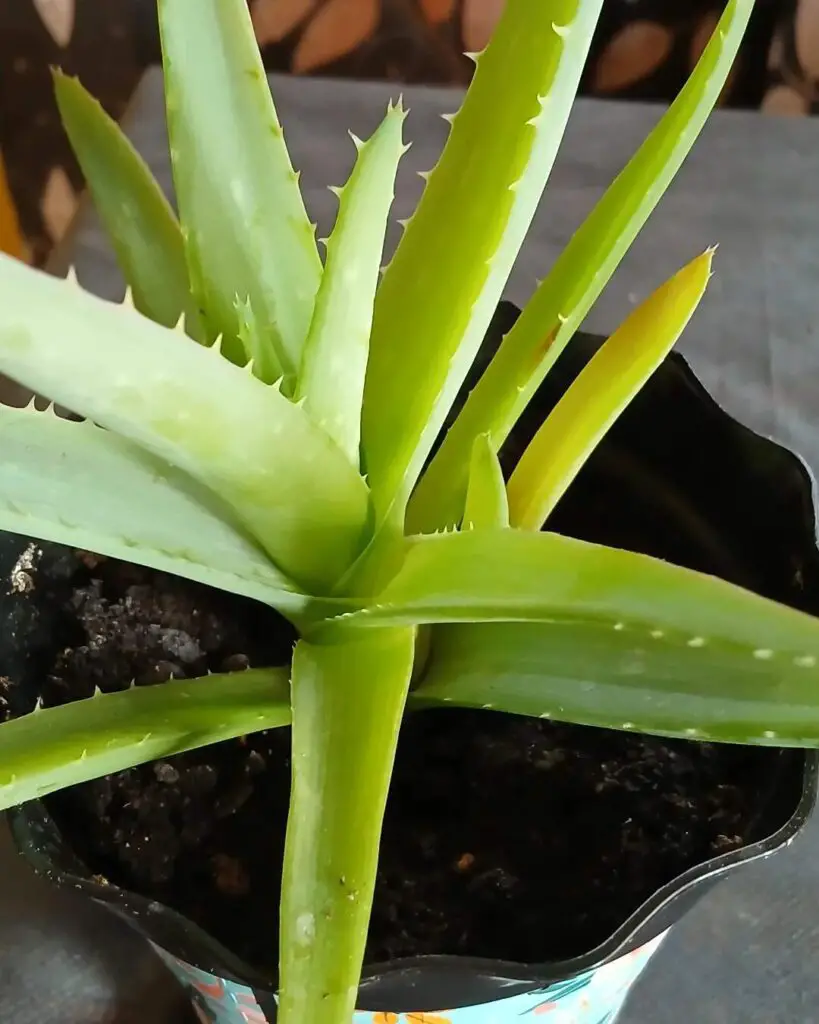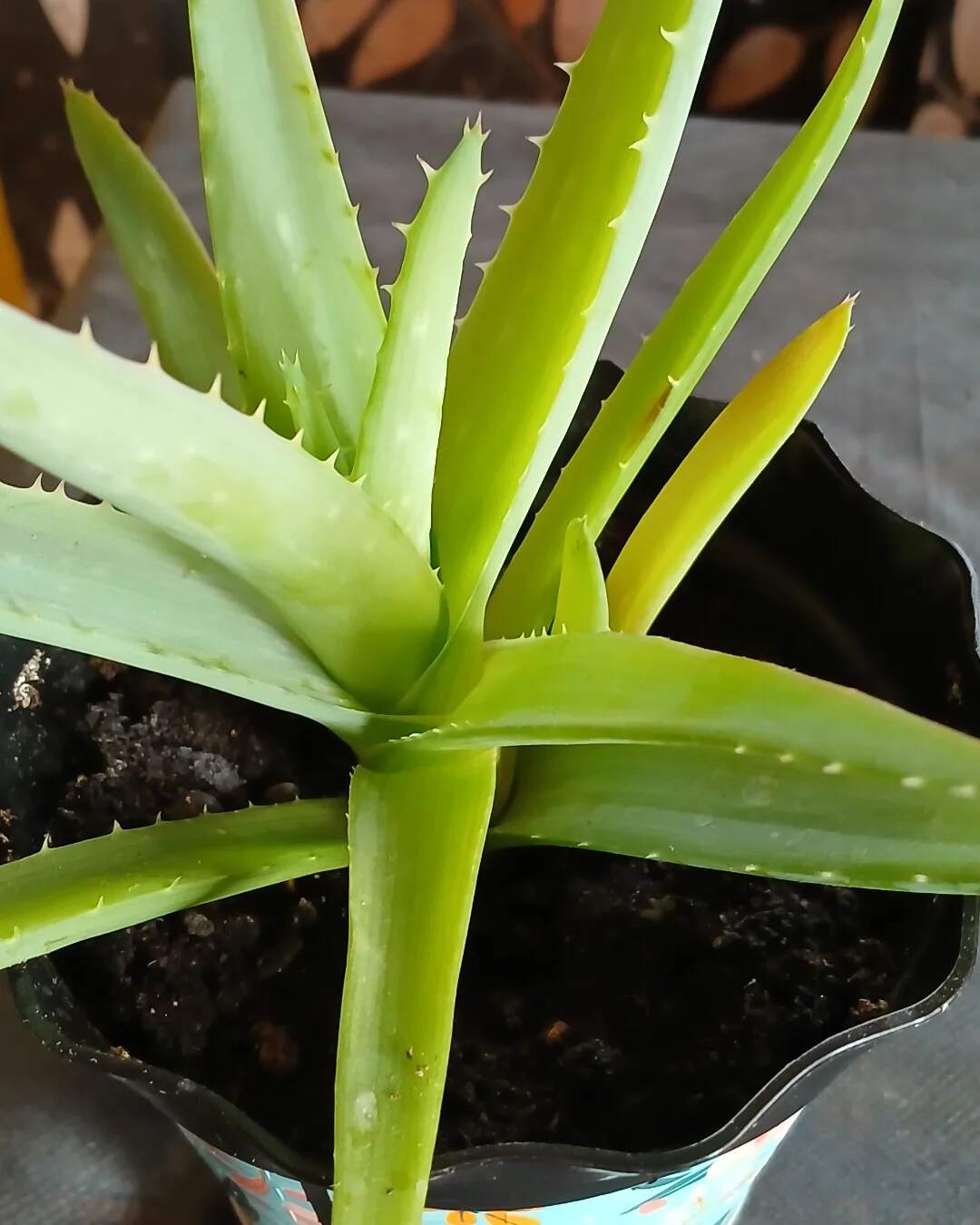Aloe vera is a hardy succulent, but it’s not immune to problems. Common aloe vera diseases can impact its growth, health, and appearance if not addressed promptly. Recognizing the early signs of trouble and knowing how to treat them is key to keeping your plant thriving.
Whether you’re growing aloe vera indoors or outdoors, disease prevention should be part of your care routine. From fungal issues to pest invasions, various threats can stress or kill your aloe plant. This article covers the most common aloe vera diseases and what you can do to protect your plant.

Root Rot: How Overwatering Silently Destroys Aloe Vera
Root rot is one of the most dangerous and frequent issues faced by aloe vera growers. It often occurs due to excess water and poor drainage, leading to soggy soil that suffocates the roots.
Causes and Symptoms
- Overwatering is the primary cause. Aloe vera roots can’t handle prolonged moisture.
- Poorly draining soil traps water around the root system.
- Symptoms include:
- Yellowing or wilting leaves
- Mushy, dark brown roots
- Foul odor from the soil
- Plant collapse despite watering
Prevention and Treatment
- Use well-draining soil, such as a cactus mix.
- Water only when the soil is completely dry.
- Ensure pots have drainage holes.
- If root rot has set in:
- Remove the plant from its pot.
- Cut away all affected roots with sterilized scissors.
- Allow the plant to dry for 24–48 hours.
- Repot in fresh, dry soil.
Key Tip
Avoid using decorative pots without holes. These trap water and increase the risk of root rot dramatically.
Powdery Mildew: Identifying and Treating the Dusty White Growth
Powdery mildew appears as a dusty white coating on aloe vera leaves. It’s a fungal infection that thrives in warm, humid environments with poor air circulation.
Signs to Watch For
- White or grayish powder on leaf surfaces
- Distorted or stunted leaf growth
- Dry or brittle patches that spread over time
What Causes It?
- High humidity levels
- Lack of airflow around the plant
- Crowding with other plants
How to Get Rid of It
- Increase airflow by spacing plants farther apart.
- Water from the base to avoid wetting leaves.
- Prune affected areas with clean scissors.
- Apply a natural antifungal spray, such as:
- Neem oil
- A mix of baking soda (1 tsp) and water (1 liter) with a few drops of dish soap
Preventive Measures
- Place aloe vera in a well-ventilated spot.
- Avoid overhead watering.
- Check regularly for early signs, especially during humid months.
Powdery mildew can spread quickly. Treat early to protect nearby plants and prevent long-term damage.
Mealybugs: Spotting and Removing These Soft-Bodied Pests
Mealybugs are one of the most persistent pests that affect aloe vera plants. These tiny, white, cottony insects suck the sap from your plant, weakening it over time and leaving behind sticky residue that attracts mold.
How to Identify Mealybugs
- White, cotton-like clumps usually found in leaf crevices
- Sticky honeydew residue on leaves or nearby surfaces
- Yellowing or curling leaves
- Stunted growth despite proper care
Why They’re Harmful
- They feed on plant sap, reducing the plant’s vigor.
- Honeydew they excrete can lead to sooty mold.
- Infestations spread quickly if not controlled.
Treatment Options
- Manual removal: Use a cotton swab dipped in rubbing alcohol to dab and kill visible bugs.
- Rinse the plant: A strong stream of water can dislodge them from the leaves.
- Neem oil spray: Acts as both a treatment and preventive.
- Insecticidal soap: Safe and effective against soft-bodied insects.
Prevention Tips
- Inspect new plants before introducing them near your aloe vera.
- Quarantine infected plants to avoid spreading.
- Avoid overfertilizing, as lush growth attracts pests.
Mealybugs are stubborn, so consistent monitoring and treatment are essential. Regularly inspecting your aloe vera plant can prevent a full-blown infestation.
Sunburn in Aloe Vera: Too Much Light Can Harm
While aloe vera is a sun-loving plant, excessive direct sunlight—especially during summer—can lead to sunburn. This condition damages the plant’s tissues and affects its ability to photosynthesize.
Telltale Signs of Sunburn
- Brown or reddish patches on the leaf surface
- Dry, crisp edges and tip burn
- Bleached or discolored spots
- Leaves may curl or droop despite proper watering
What Causes Aloe Vera to Sunburn?
- Sudden exposure to intense sun, especially if moved from indoors
- Heatwaves or high temperatures
- Low humidity, which intensifies leaf dehydration
How to Treat Sunburn
- Move the plant to a partially shaded area immediately.
- Trim severely damaged leaves, but leave mildly affected ones to recover.
- Mist lightly (not too often) to aid recovery without overwatering.
- Let the plant adjust gradually to brighter light next time.
Sunlight Guidelines
- Bright, indirect light is ideal.
- If grown indoors, place near an east- or west-facing window.
- Outdoor plants may need shade cloth during extreme heat.
Sunburn doesn’t usually kill aloe vera, but repeated exposure can weaken it over time. Controlled sun exposure is key to long-term health.
Aphids: Managing the Sap-Sucking Intruders on Aloe Vera
Aphids are tiny insects that gather on new growth and the undersides of aloe vera leaves. They suck plant juices, causing deformities, stunted growth, and attracting other pests through the sticky substance they leave behind.
How to Identify Aphids
- Clusters of small green, black, or white insects on new leaves
- Misshapen or curling leaves
- Sticky honeydew that can attract ants or mold
- Presence of ants often indicates aphid activity
Why Aphids Are a Problem
- They feed on aloe sap, robbing nutrients.
- Honeydew leads to sooty mold, reducing light absorption.
- Rapid reproduction allows for quick infestations.
How to Control Aphids
- Spray with water to knock aphids off the plant.
- Apply neem oil or insecticidal soap weekly until clear.
- Introduce natural predators like ladybugs outdoors.
- Use a rubbing alcohol solution (1:1 with water) for spot treatment.
Prevention Tips
- Inspect plants regularly, especially new growth.
- Don’t overfertilize, as tender shoots attract aphids.
- Control nearby weeds, which can harbor aphids.
Early detection is key. Aphids can be controlled without chemicals if caught early. Regularly check your aloe vera plant for signs of these pests and act quickly if found.
Leaf Spot: Understanding and Controlling This Unsightly Problem
Leaf spot is a fungal or bacterial disease that leaves brown or black lesions on aloe vera leaves. Though usually not fatal, it can make the plant unsightly and stress it over time.
Symptoms of Leaf Spot
- Dark, circular or irregular spots on the leaves
- Water-soaked or sunken areas that may enlarge
- Yellow halos around the spots
- In severe cases, leaf drop or shriveling
Common Causes
- Overhead watering
- High humidity and poor air circulation
- Contaminated tools or soil
- Infected nearby plants
Treatment Steps
- Remove affected leaves using sterilized scissors.
- Improve airflow around the plant.
- Avoid wetting leaves when watering.
- Apply a fungicide if the infection persists.
Preventive Measures
- Water at the base, not on the leaves.
- Avoid crowding plants, ensuring space for airflow.
- Use sterile tools when pruning or transplanting.
Leaf spot doesn’t always require harsh chemicals. With proper hygiene and cultural care, most mild infections can be halted and even reversed. Healthy aloe vera plants resist diseases more effectively.
Edema: Recognizing and Preventing Water-Related Blisters
Edema in aloe vera occurs when the plant takes in more water than it can use or release, causing cells to burst and form unsightly blisters or bumps on the leaves. Though not contagious or deadly, it indicates an imbalance in care.
How to Identify Edema
- Small, raised blisters or corky bumps on the leaf surface
- Translucent or water-soaked spots
- Sometimes followed by dry, scab-like patches
What Triggers Edema?
- Overwatering, especially after a dry spell
- Sudden humidity changes
- Low light conditions, reducing transpiration
- Cool temperatures, which slow water evaporation
Treatment and Control
- Reduce watering immediately.
- Improve light conditions to help with water usage.
- Increase air circulation to allow better drying.
- Do not mist aloe vera—it doesn’t need added humidity.
Prevention Tips
- Let soil dry fully before each watering.
- Use a gritty, well-draining soil mix.
- Maintain consistent temperatures and avoid cold drafts.
- Avoid watering in the late evening when evaporation slows.
Edema is often a care-related issue, not a disease. Adjusting watering habits and improving environmental conditions usually resolves it quickly. Keeping aloe vera in bright, warm, and dry conditions prevents this problem from recurring.
Fungal Rust: The Orange Dust You Shouldn’t Ignore
Fungal rust is a lesser-known but problematic disease for aloe vera. It manifests as orange or reddish-brown powdery spots on the leaves, caused by fungal spores. Though more common in humid climates, it can strike indoor plants too.
How to Recognize Fungal Rust
- Orange, rust-colored pustules on leaf undersides
- Yellow spots on upper surfaces that match rust marks underneath
- Leaves may yellow or wilt over time
- Severe cases cause leaf drop
Causes of Fungal Rust
- High humidity and poor airflow
- Overcrowded plant spacing
- Wet leaves from misting or overhead watering
- Contaminated tools spreading spores
Treatment Options
- Isolate the infected plant to prevent spread.
- Prune affected leaves with sterilized scissors.
- Use a sulfur- or copper-based fungicide.
- Increase ventilation and avoid wetting the foliage.
Prevention Steps
- Keep aloe vera in a dry, well-ventilated area.
- Water only at the base.
- Sanitize tools between uses.
- Space plants apart to reduce moisture buildup.
Fungal rust is treatable if caught early, but prevention through proper watering and airflow is most effective. Consistently dry conditions are your best defense against this orange intruder.
Final Thoughts
Aloe vera is a hardy plant, but it’s not immune to problems. Understanding the most common aloe vera diseases—and how to prevent and treat them—ensures your plant stays healthy, vibrant, and thriving for years to come. Regular care and early action make all the difference.

I’m Shofi, a passionate gardener and blogger. I have 10+ years of experience in gardening and hold certifications in horticulture and garden design. I share my knowledge and skills through my garden blog to inspire and educate others on the joys of gardening. I try to provide valuable information and create a community for gardeners of all levels to connect and learn. My ultimate goal is to inspire others to start their own gardens and connect with nature.

